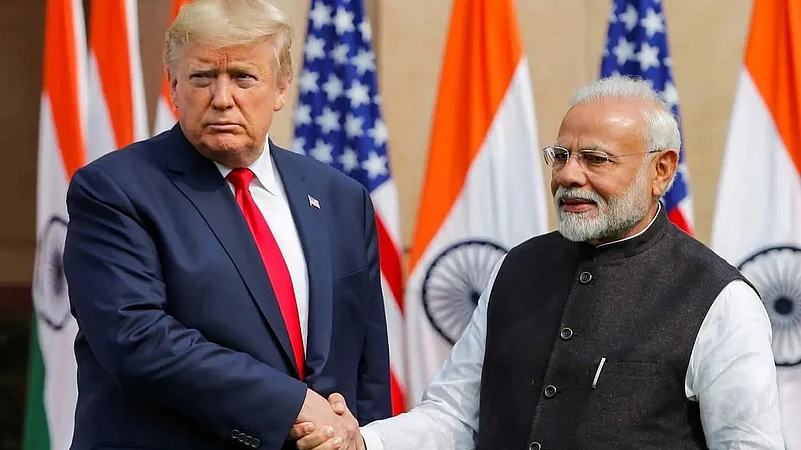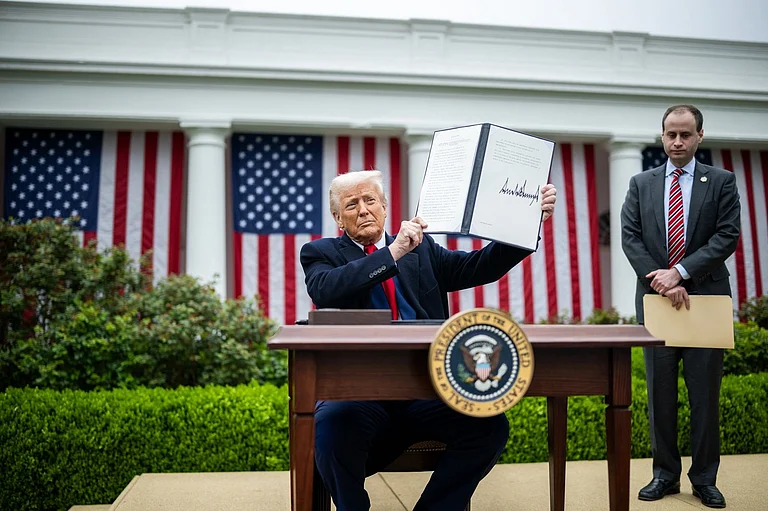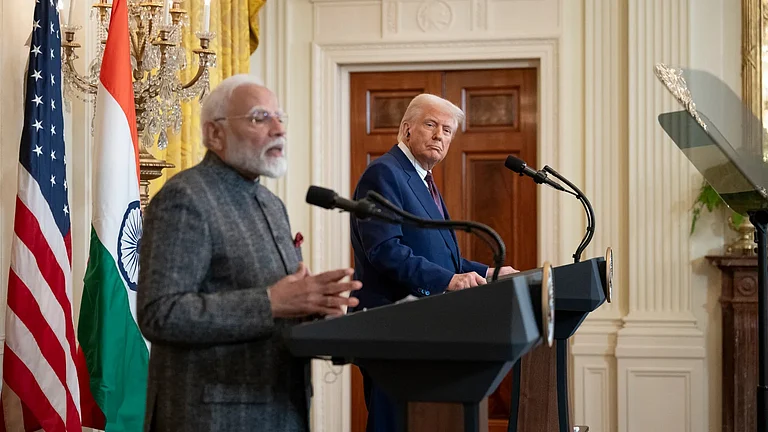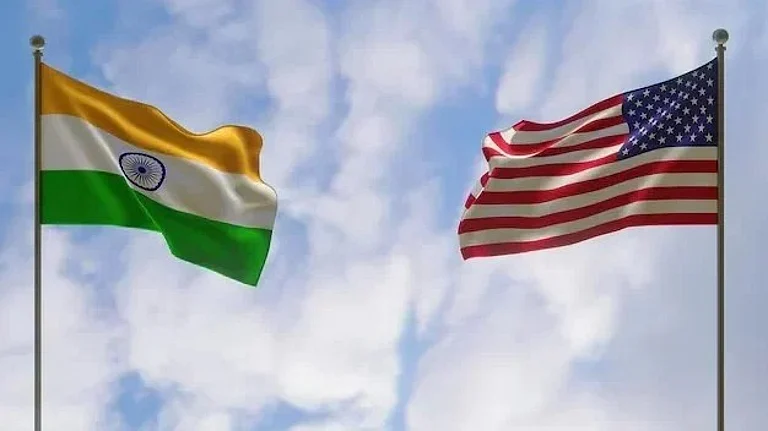The importance of the USA in India’s trade and investment cannot be undermined. In the Financial Year (FY 2024-25), the USA was India’s second largest trade partner, after China, and the largest export market for both goods and services. Given our geo-strategic tensions with China, importance of the USA in India’s trade has increased. After exiting the China-led Regional Comprehensive Economic Partnership (RCEP) in 2019, India has started focusing on trade agreements with key export markets and strategic partners like the EU, UAE, Australia and the UK. However, launch of a trade agreement with the USA somehow did not happen, and it was only in February 2025, that both sides expressed interest in discussing a bilateral trade agreement (BTA).
The India-USA trade relations suddenly changed, with President Trump calling India the “Tariff King” and announcing the intention to impose reciprocal tariffs to reverse the USA’s manufacturing and trade imbalance. While trade experts were trying to decipher exactly what US President Trump meant by the “reciprocal tariffs”, Indian Prime Minister Shri Narendra Modiji met President Trump, and in a Joint Statement on February 13, 2025, both sides set a target of USD500 billion in bilateral trade by 2030. This figure is much higher than current trade flows and would require bilateral trade to increase by around USD250–270 billion in the next five years. This can only be achieved by significantly reduction of trade barriers on both sides.
To show a positive intention and create a favourable negotiation environment, the Indian Union Budget 2025-26, reduced tariffs in key sectors like pharmaceutical, where the USA has an export interest. The efforts of our policymakers paved the way to start negotiations on an India-US BTA. During the recent visit of the United States Trade Representative (USTR) to New Delhi on 26-29 March 2025, the two sides agreed to discuss a mutually beneficial, multi-sector BTA, with the goal of finalizing its first tranche by the fall of 2025. The USA has a long “ask list” for India, which includes, tariff reduction, addressing non-tariff barriers and regulatory reforms. The 2025 USTR’s National Trade Estimate Report on Foreign Trade Barriers (NTE) listed 16 pages of tariff, non-tariff and regulatory issues that the USA companies face in India. Comparatively, Bangladesh was covered in 5 pages, Canada in 6 pages, China in 48 pages and Vietnam in 8 pages. After analysing the barriers across its 28 member states, the EU was covered in 34 pages. So, India is among the top five markets, where the USTR perceive the barriers to be very high.
In this scenario, where President Trump perceives trade to be unfair, the April 2 reciprocal tariffs announcement was somewhat a relief for India. The announcement covered all trade partners, irrespective of their size, importance to the USA economy, volume of trade, whether they have an FTA with the USA or not and whether the country is developed, developing or least developed. The penalty on the country is based on a formula, which is tilted more towards trade imbalance rather than tariffs, and probably due to its lower trade imbalance in goods, India received a discounted tariff of 26%. Even before the April 2 announcement, the first set of tariffs were directed towards Mexico and Canada – the two FTA partners. All FTA partners faced reciprocal tariffs. Among them, Vietnam faced a high ‘reciprocal tariff’ of 46%, on account of its positive trade balance with the USA, despite its comprehensive agreement despite much lower barriers perceived by USTR NTE 2025. Compared to many of its competitors like Bangladesh (37%), Cambodia (49%) and Thailand (36%), India faced a lower reciprocal tariff rate. Due to this, Indian firms may look to be more competitive in the USA market vis-a-vis their competitors. But if this leads to more exports and increase in trade imbalance, there is a threat of future rise in reciprocal tariffs. If India reduces tariffs for the USA goods under the BTA, it may or may not address the trade imbalance. How much domestic demand can be generated in India for zero-tariff American products like apples, corn, motorcycles, automobiles, flowers, coffee, raisins, walnuts and alcoholic beverages? On the contrary, if we get zero duty, we can export a lot more products to the USA. So, as in the case of Vietnam, our trade surplus with the USA could enlarge after a BTA.
With the USA’s growing hostility towards China, and China’s retaliations, the USA companies need a large market, which we offer and that is to our advantage. However, the trade agreement may not secure trade certainty as the USA is using national security or severe balance of payment crisis-related exemptions in trade agreements to misuse provisions of trade agreements. We cannot go to the WTO for dispute resolution, as the appellate body has been made non-functional.
Other countries have already started reacting to the reciprocal tariffs. Some of our competing countries may bring down tariffs to zero for the US exports, as Vietnam is reportedly considering, while others, like China and Canada, may impose reciprocal tariffs. Some countries may quietly and smartly subsidize their exports and others may play with exchange rates to absorb the high tariff impact. We must carefully monitor these reactions.
Companies may start changing their sourcing hubs and use low-tariff countries as trans-shipment hubs to route their products into the USA market. For example, countries with high reciprocal tariffs may export goods through the UAE or Singapore, which face lower tariffs, rather than directly to the US market.
Over-dependence on the USA may make India more prone to their uncertain policies. However, as of now, the Trump administration is mostly working on tariffs, so should we quickly do a digital trade agreement and a services agreement by fall 2025 to secure our two important export sectors. Since the USA and India are not a part of the WTO Joint Statement Initiative on Ecommerce, India needs to quickly seal the moratorium on custom duties for its IT/ITeS and other online exports to the USA. The USA technology companies would also prefer a free bilateral trade regime for digital trade and services, and these are our core exports to the USA. Therefore, it is in India’s interest to focus on these two areas as priorities in the BTA and not rush into an agreement that is only tilted towards goods trade and tariff reduction.
For India, reduction of tariffs in some of the sensitive sectors like diary, cotton, alcoholic beverages and automobiles can lead to unhappiness among some domestic lobbies. In products like apples and alcoholic beverages, it is best to phase out the tariffs autonomously as it is the ask list of other trade partners, including the UK, Australia and New Zealand. India can try innovative methods for tariff reduction like removing the Agriculture Infrastructure and Development Cess (AIDC) in case of alcoholic beverages for companies that are investing a certain amount in the country. Lower taxes can be applied for intermediate products and bulk for alcoholic beverages vis-a-vis final product. In short, we need innovative tariffs strategies aligned with the objective of “Make in India”, aligned with our strategic goal and help us to de-risk our supply chain and reduce over-dependence on one market.
Overall, we should not be in a rush to sign a BTA but wait and watch as the situation unfolds and prioritize the sectors and areas of our trade interest. It is the right time for India to implement domestic reforms to attract investment and improve industry competitiveness, especially of our MSMEs. In some cases, reforms may require regulatory changes, while in others, like dismantling the nowhere to be found in the world, single-brand and multi-brand retail policy. Having a holistic policy for all modes of retail (online and store-based) will be beneficial for the country. Conditions for supporting MSMEs or zoning regulations may apply but they should not be part of the retail FDI policy. A study by ICRIER for Invest India and DPIIT have reviewed and carefully mapped tweets in FDI policy, which can help India to attract FDI. Some announcements have already been made. For example, the Union Budget 2025-26, proposed a higher FDI limit for the insurance sector. The FDI policy should be such that it does not impact business model efficiency and the country can get more investment. Simultaneously, we should closely monitor what competing countries are doing, how supply chains are changing, diversify and de-risk our own supply chains and continue to smartly engage with all FTA partners, including the EU, the US, the UK and Australia, to ensure some stability and predictability in this uncertain trade environment.
[The author is a professor at ICRIER]



























